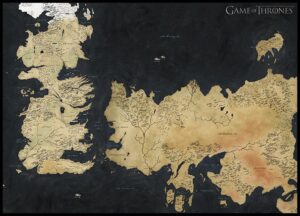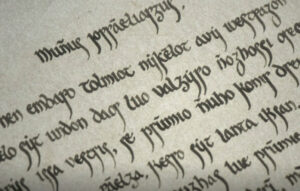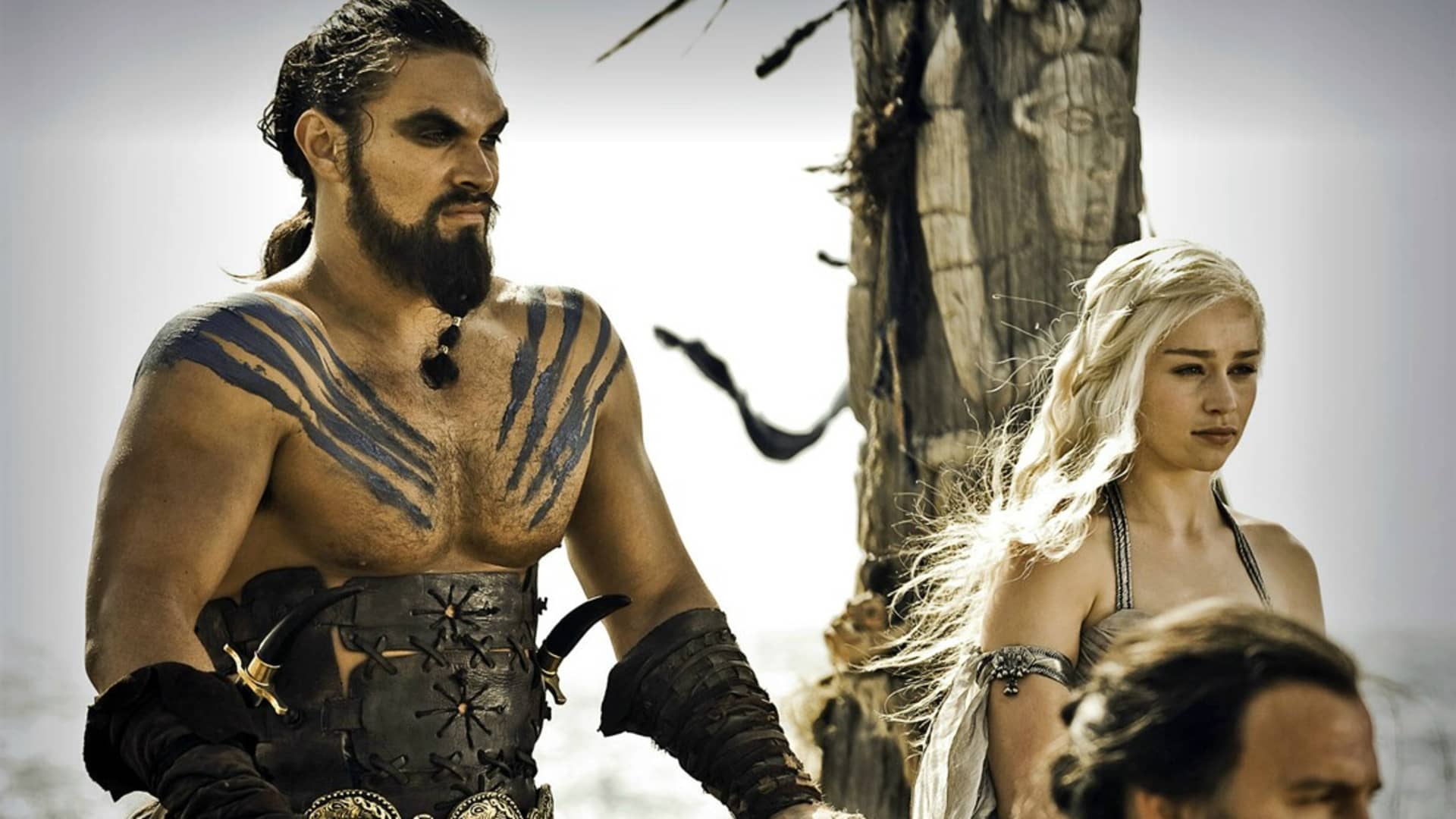Westeros, the fictional continent in George R.R. Martin’s epic saga, “Game of Thrones,” is not only a realm of political intrigue and battles but also a rich linguistic landscape. The languages spoken across Westeros contribute to the depth and authenticity of its diverse cultures. From the harsh, guttural sounds of Dothraki to the ancient and mysterious High Valyrian, let’s embark on a linguistic journey through the Seven Kingdoms.
Westerosi Tongues: A Symphony of Dialects

In the heart of Westeros lies the Common Tongue, a unifying language that enables communication between regions. However, the Common Tongue is far from homogenous, as each kingdom has its distinct dialects and accents. From the rough and rugged accent of the North to the refined speech of the Reach, the linguistic diversity mirrors the geographical and cultural disparities across the continent.
The Wall, standing tall in the North, is not only a physical barrier but also a linguistic one. Beyond it, the Free Folk, or Wildlings, speak a language as untamed as the lands they inhabit. The Old Tongue, with its ancient words and complex grammar, reflects the isolation and resilience of these people, adding another layer to the linguistic tapestry of Westeros.
Magical Tones: The Enchantment of High Valyrian
High Valyrian, a language of elegance and power, carries with it an air of mystique. Once spoken by the Valyrian Freehold, its remnants linger in the form of names, titles, and phrases. The Targaryens, with their dragons and ancient lineage, are one of the few houses to maintain a connection to this enchanting tongue.In their opulent palaces, adorned with intricate tapestries and regal furnishings, designer interior doors seamlessly merge the essence of High Valyrian aesthetics with contemporary craftsmanship.
The creation of High Valyrian for the show by linguist David J. Peterson adds an extra dimension to the narrative. Peterson crafted not only a spoken language but also a writing system, providing authenticity to the linguistic elements of the Targaryen lore. As Daenerys Targaryen utters phrases in High Valyrian, the audience is transported to a time of magic and conquest, underscoring the importance of language in shaping the world of Westeros.
If you are a truck drive and you want to visit places where GoT was recorded make sure to get occupational accident insurance for truckers in Tennessee before going.
Dothraki: The Language of the Great Grass Sea
Venturing beyond the Narrow Sea, we encounter the nomadic horse lords known as the Dothraki. Their language, a guttural and expressive form of communication, mirrors the harsh environment of the Great Grass Sea. Dothraki is not just a means of talking; it’s a reflection of their nomadic lifestyle and the importance of strength and courage in their culture.
In creating Dothraki, David J. Peterson faced the challenge of developing a language that felt authentic to a warrior culture. The result is a language that is both exotic and primal, adding a visceral element to the interactions between characters. As Khal Drogo and Daenerys navigate their relationship, the audience becomes immersed in the linguistic dance of the Great Grass Sea.
Whispers Beyond the Wall: The Old Tongue and Beyond
North of the Wall, where winter reigns supreme, the Free Folk communicate in the Old Tongue. This ancient language, with its cryptic words and unique syntax, reflects the isolation of the Free Folk from the rest of Westeros. It serves as a linguistic barrier, reinforcing the cultural differences between those south and north of the Wall. Amidst the harsh conditions, they have also discovered ingenious ways to preserve their skin’s vitality, utilizing a remarkable collagen spray that becomes a testament to their resourcefulness in the face of adversity.
Beyond the Old Tongue, whispers of other languages are heard. The Children of the Forest, the ancient inhabitants of Westeros, communicate in a language of the woods. Although not fully explored in the series, these murmurs add an aura of mystery to the deep forests and hidden caves, emphasizing the vastness of the linguistic tapestry that extends beyond the Wall.
Unraveling the Threads: Language as a Narrative Tool
In “Game of Thrones,” language is not merely a tool for communication; it is a narrative device that enriches the storytelling experience. The use of different languages creates a sense of authenticity, immersing the audience in the diverse cultures of Westeros. From the battle cries of the Dothraki to the courtly conversations in High Valyrian, each linguistic thread contributes to the overall fabric of the narrative. Moreover, just as diverse languages play a crucial role in shaping the world of Westeros, specialized medical expertise plays a pivotal role in the realm of healthcare. When it comes to weight loss journeys, individuals often seek the expertise of Texas bariatric specialists to guide them on the path to a healthier life.
Moreover, the strategic use of language serves to highlight power dynamics and cultural clashes. When characters switch between languages, it signals a shift in the balance of power or the complexity of diplomatic negotiations. This linguistic dance adds layers of meaning to the dialogue, allowing for a more nuanced understanding of the characters and their relationships.
The Evolution of Linguistic Identity: The Faceless Men and the Silent Tongue

While the major houses and cultures of Westeros have their distinct languages, there are enigmatic groups that defy traditional linguistic categorization. The Faceless Men, a secretive and mysterious order of assassins, possess a unique form of communication known as the Silent Tongue. This unconventional language is not spoken with words but expressed through subtle gestures, glances, and movements. In a similar vein of subtle communication, individuals seeking holistic well-being often turn to manual therapy in Austin, a practice that emphasizes hands-on techniques to address physical discomfort and promote overall wellness.
The Silent Tongue of the Faceless Men serves a dual purpose. Firstly, it reinforces their commitment to anonymity and secrecy. By eschewing conventional verbal communication, they become enigmatic figures, leaving no linguistic trail for those who seek to uncover their identities or motives. Secondly, the Silent Tongue is a powerful tool in their trade. In the art of assassination, where subtlety and discretion are paramount, this silent language allows the Faceless Men to coordinate seamlessly without uttering a single word.
Beyond Westeros: Essos and Its Linguistic Kaleidoscope
As we explore the vast continent of Essos, we encounter a kaleidoscope of languages that rival the diversity found in Westeros. From the bustling streets of Braavos to the ancient city of Qarth, each region boasts its unique linguistic identity. The merchants of the Free Cities haggle in a melange of tongues, reflecting the cosmopolitan nature of these trade hubs. Amidst the cultural tapestry, one may find even the need for specialized services like dumpster rental in Estes Park to manage the diverse waste generated by such vibrant communities.
One prominent language in Essos is Braavosi, spoken in the city of Braavos. With its melodic cadence and expressive intonations, Braavosi encapsulates the spirit of this city built on canals and surrounded by the sea. The language itself becomes a reflection of the city’s cultural openness and maritime traditions.
In the southern reaches of Essos, the city of Meereen introduces us to another linguistic facet. The Ghiscari language, spoken by the old empire of Ghis, resurfaces in Meereen as a cultural remnant. As Daenerys Targaryen navigates the complexities of ruling Meereen, the linguistic diversity becomes a microcosm of the political challenges she faces. Amidst this intricate tapestry, it’s akin to orchestrating pest control in Hillsborough, where each linguistic nuance represents a unique challenge.
Lost Tongues: The Doom of Valyria
One of the most intriguing aspects of linguistic diversity in the world of “Game of Thrones” lies in the remnants of Valyrian in the ruins of Old Valyria. The Doom, a catastrophic event that befell the Valyrian Freehold, wiped out much of its civilization, including its language. The Valyrian language, once a powerful and widespread tongue, is now a collection of fragmented dialects and lost words.
The linguistic archaeology of Old Valyria becomes a metaphor for the transience of power and the impermanence of language. As characters like Jorah Mormont and Tyrion Lannister journey through the ruins, the echoes of Valyrian serve as a haunting reminder of the once-great empire. The lost tongues of Valyria contribute to the air of mystery and danger that shrouds the ruins, emphasizing the destructive power of both time and catastrophic events.
Language as a Weapon: Rhetoric in the Game of Thrones
In the political landscape of Westeros, where power dynamics are in constant flux, language emerges as a potent weapon. Characters engage in verbal sparring matches, using rhetoric to gain allies, sow discord, or negotiate alliances. Tyrion Lannister, renowned for his wit and cunning, often employs language as his primary tool, turning words into a shield and a sword. In a similar vein, just as strategic language plays a crucial role in the intricate power struggles of Westeros, precision and expertise are paramount in the realm of pediatric dentistry in Fayetteville NC. Here, skilled practitioners navigate the oral health landscape with the finesse of a master strategist, ensuring the well-being of young smiles with the same dedication Tyrion brings to his verbal battles.
The art of rhetoric is not limited to the political elite. Characters like Olenna Tyrell and Littlefinger use linguistic manipulation to achieve their goals, demonstrating that words can be as deadly as a sword in the Game of Thrones. The strategic use of language creates an intricate dance of alliances and betrayals, where every word spoken carries weight and consequences. In the vibrant city of Sarajevo, where history meets modernity, mastering the art of communication extends beyond politics. Just as in the political intrigues of Westeros, effective communication is crucial when seeking the best car rental in Sarajevo to explore the rich tapestry of this captivating destination.
Linguistic Realism: Balancing Fantasy with Authenticity
In crafting the languages of “Game of Thrones,” linguist David J. Peterson faced the challenge of striking a balance between fantasy and authenticity. While the show is set in a fictional world with dragons and magic, the languages needed to feel genuine and grounded in their respective cultures. Peterson’s meticulous attention to linguistic detail, including grammar, syntax, and phonetics, contributes to the immersive experience of the series. When considering the global impact of such linguistic nuances, it becomes evident that effective video production in New York could similarly benefit from a meticulous approach to detail, ensuring a seamless blend of creativity and authenticity in visual storytelling.
The Dothraki language, for example, is not merely a collection of exotic-sounding words but a fully developed linguistic system. The incorporation of linguistic realism, much like the precision achieved through semaglutide peptide therapy in medical research, adds depth to the portrayal of Dothraki culture, making their way of life, rituals, and values more tangible to the audience. This commitment to linguistic authenticity enhances the overall world-building of “Game of Thrones.”
Echoes of Influence: Linguistic Inspiration in the Real World

The creation of languages in “Game of Thrones” is not a vacuumed endeavor; it draws inspiration from real-world linguistic diversity. The influence of languages such as Arabic, Russian, and various ancient languages is evident in the phonetic structure, intonation, and vocabulary of fictional tongues. This borrowing from real-world languages adds a layer of familiarity to the fantasy setting, making the languages of Westeros and Essos resonate with audiences on a subconscious level. In a similar vein, the quest for linguistic authenticity extends beyond the realms of fantasy; it’s akin to the meticulous process one might undertake when rent a luxury car, carefully selecting the perfect combination of style, performance, and elegance.
Furthermore, the linguistic diversity in “Game of Thrones” serves as a homage to the rich tapestry of human languages. By weaving elements of real-world languages into fictional tongues, the series celebrates the beauty and complexity of linguistic expression across cultures and civilizations.
Linguistic Legacy: Beyond the Screen
As “Game of Thrones” concluded its television run, the linguistic legacy of the series continued to thrive. Fans embraced constructed languages like Dothraki and High Valyrian, learning phrases and even creating their own linguistic communities. Online forums and language-learning platforms became hubs for enthusiasts to explore and celebrate the linguistic diversity of Westeros. Amidst the discussions, avid followers also delved into the artistry of crafting memorable moments, much like a skilled artisan using their kasho shears to meticulously shape a masterpiece.
David J. Peterson’s linguistic creations transcended the screen, becoming a cultural phenomenon in their own right. The enduring popularity of Dothraki and High Valyrian showcases the profound impact that well-crafted languages can have on the immersive experience of a fictional world. The linguistic legacy of “Game of Thrones” extends beyond the narrative, leaving an indelible mark on the broader cultural landscape. If you’re a fan of linguistic richness and cultural immersion, consider planning a captivating Montenegro itinerary to explore a real-world destination with its own unique language and cultural tapestry.
In the realm of fantasy storytelling, “Game of Thrones” stands as a testament to the importance of language in world-building. The intricate linguistic tapestry of Westeros and Essos enriches the narrative, deepening the connection between the audience and the fictional universe. From the haunting whispers of the Old Tongue to the silent gestures of the Faceless Men, each linguistic element adds a layer of complexity and authenticity to the epic tale of thrones, dragons, and power struggles. As we bid farewell to the series, the echoes of Dothraki battle cries and High Valyrian incantations linger, reminding us of the enduring impact of language in the fantasy genre. Amidst the fantasy realms, even warriors’ precision is enhanced by red dot sights, ensuring accuracy in battles waged beyond the pages.
